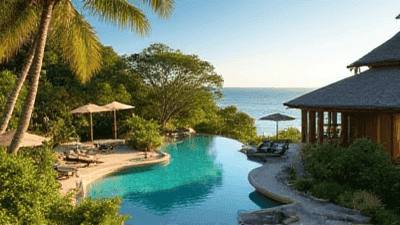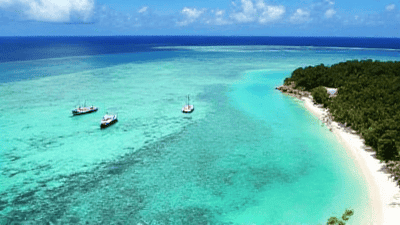
In a fast-paced world where instant gratification has become the norm, the concept of slow travel is gaining traction as an antidote to our hectic lifestyles. This emerging trend encourages travelers to take their time, connect deeply with their chosen destinations, and experience the world at a relaxed pace.
What is Slow Travel?
Slow travel is a philosophy that encourages travelers to immerse themselves in a destination rather than rush through it. It focuses on quality over quantity, urging individuals to fully engage with local cultures, nature, and communities. Slow travel is about embracing the journey, savoring experiences, and fostering meaningful connections, both with the people you meet and the places you explore.
The Principles of Slow Travel
-
Mindfulness: Slow travel encourages a sense of presence and awareness. By slowing down, travelers can fully appreciate their surroundings, from the sights and sounds to the flavors and smells of a destination.
-
Connection: Building relationships with local people and cultures is at the heart of slow travel. Engaging with locals leads to authentic experiences and a deeper understanding of a destination.
-
Sustainability: Slow travel often aligns with sustainable tourism practices, as it emphasizes environmental preservation and supports local economies.
-
Personal Growth: Exploring the world at a slower pace can foster self-discovery and reflection. It allows travelers to step outside their comfort zones and embrace new experiences.
The Benefits of Slow Travel
Adopting a slow travel mindset can transform the way we experience the world. Here are some of the numerous benefits associated with this approach:
1. A Deeper Connection to Place
In a world of constant stimulation, slow travel offers the opportunity to forge a stronger connection with a destination. By spending more time in one location, travelers can develop an understanding of local customs, traditions, and rhythms. This connection can lead to more meaningful interactions with locals, offering insights that typical tourist experiences may not provide.
2. Enhanced Cultural Exchange
With slow travel, the chances of engaging in cultural exchanges significantly increase. Travelers have the time to participate in community events, local workshops, and traditional activities, fostering genuine relationships with residents. Such experiences create lasting memories and contribute to a richer travel narrative.
3. Reduced Stress and Increased Wellbeing
Slow travel encourages a more relaxed pace, reducing the stress often associated with tightly packed itineraries. By avoiding the rush to see everything, travelers can enjoy downtime and reflection. This slower approach can contribute to improved mental health and overall wellbeing.
4. Environmental Benefits
Slow travel often promotes eco-friendly practices, such as using local transportation, staying in family-run accommodations, and patronizing local eateries. This approach reduces the carbon footprint associated with travel and supports sustainable tourism initiatives.
5. Quality Over Quantity
Instead of ticking off a long list of attractions, slow travel emphasizes the quality of experiences. This allows travelers to savor each moment and truly appreciate their surroundings rather than feeling compelled to rush to the next destination.
Embracing Slow Travel: Practical Tips
Now that we've explored the benefits of slow travel, how can you incorporate this philosophy into your future journeys? Here are some practical tips to help you embrace the slow travel movement:
1. Choose Fewer Destinations
Rather than cramming multiple destinations into one trip, opt for a smaller number of locations. This allows you to spend more time in each place, delving into the local culture and exploring at a leisurely pace.
2. Engage in Local Experiences
Seek out immersive experiences that connect you with the local culture. This might include cooking classes, guided nature walks, or volunteer opportunities. Engaging in these activities can deepen your understanding of the destination and its people.
3. Use Sustainable Transportation
Instead of hopping on planes or taking multiple taxis, consider walking, cycling, or using public transportation. This not only reduces your carbon footprint but also allows you to appreciate the environment around you as you travel.
4. Prioritize Meaningful Interactions
Take time to get to know the locals. Ask for recommendations, share stories, and participate in community events. These interactions can enrich your travel experience and create lasting memories.
5. Unplug and Disconnect
Slow travel encourages stepping back from the fast-paced digital world. Limit your screen time and focus on being present in the moment. This can enhance your connection to the destination and the people you meet.
6. Embrace Flexibility
Let go of rigid schedules and allow spontaneity to guide your travel experience. Be open to unexpected detours and serendipitous encounters, as they often lead to the most memorable adventures.

Inspiring Slow Travel Destinations
To provide you with inspiration for embracing slow travel, here are some destinations that perfectly embody this philosophy:
1. Tuscany, Italy
Renowned for its breathtaking landscapes, charming villages, and rich culture, Tuscany is the perfect place for slow travel. Take time to explore the rolling hills, indulge in local cuisine, and participate in wine tastings at family-run vineyards. The region invites travelers to savor each moment and appreciate the art of “la dolce vita.”
2. Kyoto, Japan
Kyoto, with its ancient temples, traditional tea houses, and serene gardens, offers a unique setting for slow travel. Wander through Arashiyama’s bamboo groves, participate in a traditional tea ceremony, and explore the city’s historical districts at a leisurely pace. The slower rhythm of Kyoto encourages reflection and connection to its rich cultural heritage.
3. Patagonia, Chile and Argentina
For nature lovers, Patagonia presents a stunning backdrop for slow travel. Hike through national parks, connect with local guides, and take time to appreciate the breathtaking landscapes. Whether kayaking in glacial lakes or observing wildlife, the region’s natural beauty encourages travelers to slow down and immerse themselves in the environment.
4. Provence, France
Provence is characterized by its lavender fields, olive groves, and charming villages. Embrace the slower pace by visiting local markets, enjoying leisurely lunches, and exploring hidden gems off the beaten path. The region encourages a sense of appreciation for the simple pleasures of life.
5. Bhutan
Bhutan's commitment to preserving its culture and environment makes it an ideal destination for slow travel. The country prioritizes quality over quantity by limiting tourism and encouraging visitors to engage with its rich traditions. Trekking through the Himalayas, participating in local festivals, and embracing Bhutan’s unique culture fosters a deeper connection to the land.
The Future of Travel: Why Slow Travel Matters
In an age where sustainability and mindfulness are increasingly recognized as essential values, slow travel resonates with modern travelers seeking meaningful experiences. Here are some reasons why slow travel is relevant to the future of tourism:
1. Response to Overtourism
With the rise of overtourism in many popular destinations, slow travel acts as a countermeasure. By dispersing travelers across lesser-known locations and encouraging longer stays, slow travel can help alleviate the strain on overcrowded sites.
2. Sustainable Practices
As travelers become more conscious of their impact on the environment, the principles of slow travel align perfectly with sustainable tourism. This movement champions eco-friendly practices, which are essential for preserving the planet for future generations.
3. Emotional Wellbeing
The mental health benefits associated with slow travel are becoming increasingly important. In a world that often promotes busyness and constant availability, slowing down can provide respite and foster emotional wellbeing.
4. Authentic Experiences
With a growing desire for authenticity in travel, slow travel allows individuals to connect deeply with local cultures and communities. This approach nurtures meaningful interactions and enriches the travel experience.
5. Cultural Preservation
By promoting local experiences and supporting small businesses, slow travel fosters cultural preservation. This aspect resonates with travelers who wish to ensure that their visits contribute positively to the places they explore.
Conclusion
Slow travel is not just a trend; it is a transformative philosophy that invites travelers to explore the world with intention, mindfulness, and a sense of connection. By embracing this approach, we can create deeper relationships with the places we visit, support local communities, and experience the beauty of our planet in a sustainable way.
As you plan your next adventure, consider the principles of slow travel. Choose fewer destinations, engage with local cultures, and savor every moment. In doing so, you will discover that the journey is just as important as the destination, and the memories you create will last a lifetime.
By slowing down, we can explore the world not only as tourists but as conscious travelers, leaving a positive mark on the places we visit and enriching our own lives along the way.



